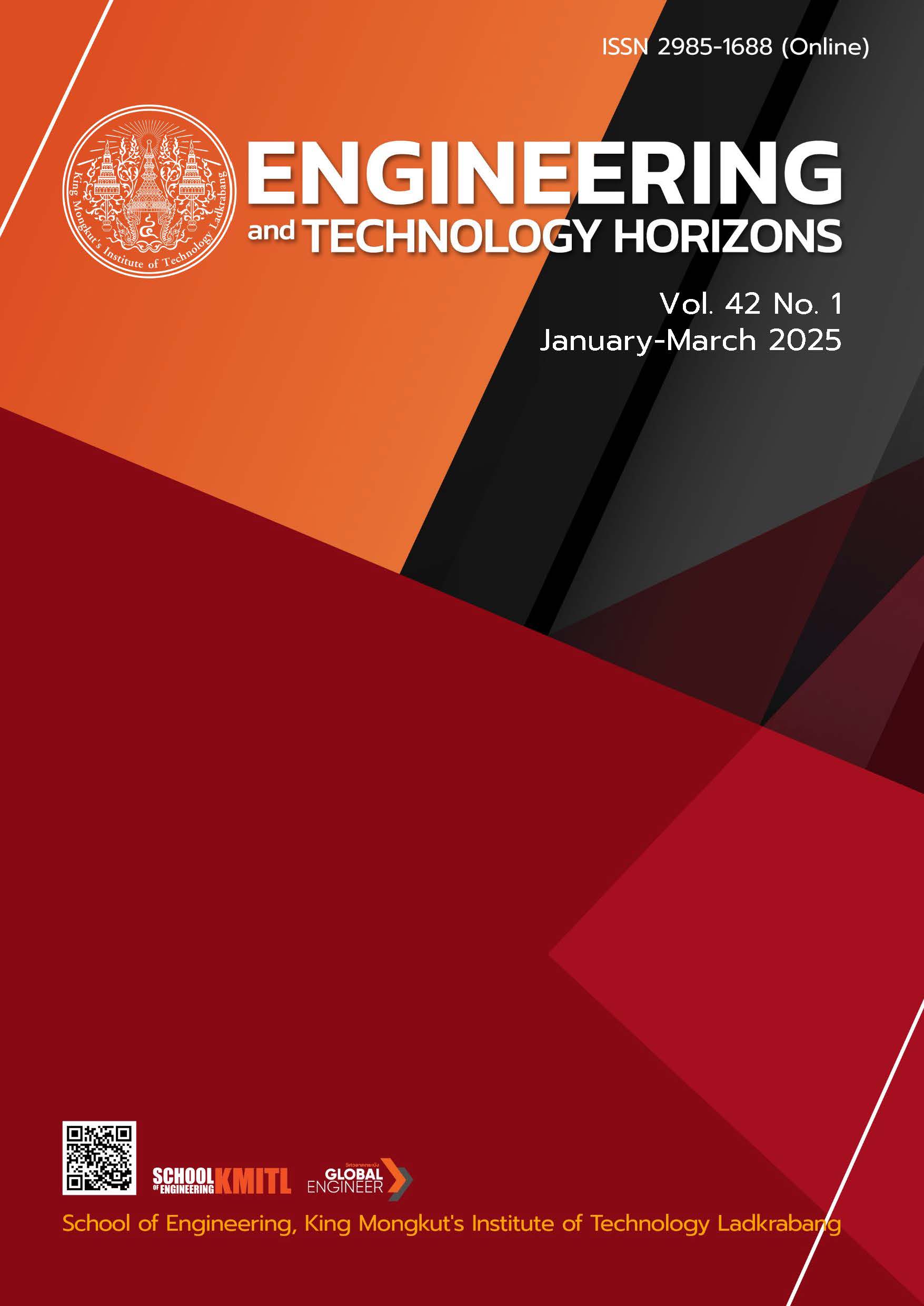Rapid estimation method for span load distribution on a rectangular wing planform using tabular data from lifting-line theory
DOI:
https://doi.org/10.55003/ETH.420105Keywords:
Aerodynamics, Lifting-line theory, Wingspan load distributionAbstract
The aim of this article is to present the rapid estimation method for span load distribution on a rectangular wing planform by using the tabular data from lifting-line theory. The data is generated by solving a monoplane equation to determine the coefficient of Fourier sine series that represents horseshoe strength distributed along the wingspan. Then the ratio of local lift coefficient to wing lift coefficient at the selected positions are determined and are presented in the tabular form. This set of data can be used to determine the spanwise lift distribution, the magnitude of total lift force and spanwise center of pressure location. The present method can be applied for a rectangular planform which has no sweep angle at quarter chord line and has no both geometric and aerodynamic twist along wingspan. The range of wing aspect ratio is 4 to 12 and the taper ratio is 0.1 to 1.0. Although the assumption of flow around wing planform is incompressible flow or at Mach number lower than 0.3, this present method can be extended to be used for subsonic compressible flow condition by using Prandtl-Glauert rule which is also discussed in this article. An illustrative example of the calculation process is presented in this article and the comparison of the result from the present method to the other calculation methods and experimental data are also discussed in this article.
References
S. Chinvorarat, B. Watjatrakul, P. Nimdum, T. Sangpet, T. Soontornpasatch and P. Vallikul, “Static testing for composite wing of a two-seat airplane,” in 9th TSME-International Conference on Mechanical Engineering (TSME-ICoME 2018), Phuket, Thailand, Dec. 11–14, 2018, pp. 1–8, doi:10.1088/1757-899X/501/1/012026.
R. F. Anderson, “Determination of the characteristics of tapered wings,” National Advisory Committee for Aeronautics, Washington, WA, USA, Rep. NACA-TR-572, 1937.
J. Deyoung, “Theoretical Additional Span Loading Characteristics of Wings with Arbitrary Sweep, Aspect Ratio, and Taper Ratio,” National Advisory Committee for Aeronautics, Washington, WA, USA, Rep. NACA-TN-1491, 1947.
V. I. Stevens, “Theoretical Basic Span Loading Characteristics of Wings with Arbitrary Sweep, Aspect Ratio, and Taper Ratio,” National Advisory Committee for Aeronautics, Washington, WA, USA, Rep. NACA-TN-1772, 1948.
J. Weisinnger, “The lift distribution of swept-back wings,” National Advisory Committee for Aeronautics, Washington, WA, USA, Rep. NACA-TM-1120, 1947.
J. DeYoung and C. W. Harper, “Theoretical symmetric span loading at subsonic speeds for wings having arbitrary plan form,” National Advisory Committee for Aeronautics, Washington, WA, USA, Rep. NACA-TR-921, 1948.
T. Soontornpasatch, “Incompressible flow over finite wings,” in Aerodynamics for Aeronautical Engineers, Bangkok, Thailand: KMUTNB Textbook publishing center, 2024, ch. 6, sec. 6.4, pp. 92–99.
J. D. Hoffman, “System of Linear Algebraic Equations,” in Numerical Method for Engineers and Scientists, 2nd ed, New York, NY, USA: McGraw-Hill, Inc., 2001, ch. 1, sec. 1.7, pp.59–67.
J. J. Bertin and R. M. Cummings, “Incompressible Flow About Wings Of Finite Span,” in Aerodynamics for Engineers, 5th ed., New York, NY, USA: Pearson Education Inc., 2009, ch. 7, sec. 7.3, pp. 346–347.
M. C. Niu, “Aircraft loads,” in Airframe structural design: Practical design information and data on aircraft structures, North Point, Hong Kong: Conmilit Press Ltd., 1989, ch. 3, sec. 3.11, pp. 79–80.
W. Jacobs, “Pressure-distribution measurements on unyawed swept-back wings,” National Advisory Committee for Aeronautics, Washington, WA, USA, Rep. NACA-TM-1164, 1947.
R. T. Whitcomb, “Investigation of the characteristics of a high-aspect-ratio wing in the Langley 8-foot high-speed tunnel,” National Advisory Committee for Aeronautics, Washington, WA, USA, Rep. NACA-RM-L6H28a, 1946.
Downloads
Published
How to Cite
Issue
Section
License
Copyright (c) 2025 School of Engineering, King Mongkut’s Institute of Technology Ladkrabang

This work is licensed under a Creative Commons Attribution-NonCommercial-NoDerivatives 4.0 International License.
The published articles are copyrighted by the School of Engineering, King Mongkut's Institute of Technology Ladkrabang.
The statements contained in each article in this academic journal are the personal opinions of each author and are not related to King Mongkut's Institute of Technology Ladkrabang and other faculty members in the institute.
Responsibility for all elements of each article belongs to each author; If there are any mistakes, each author is solely responsible for his own articles.






